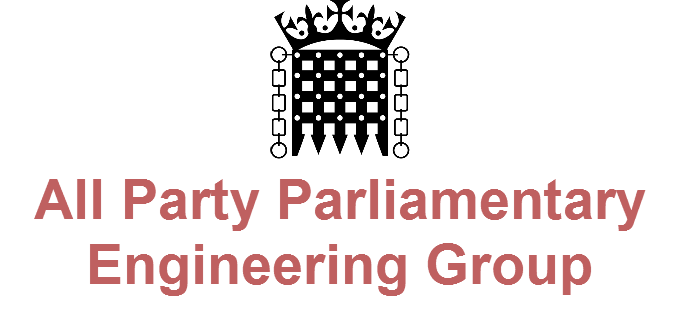The All-Party Parliamentary Group for Engineering
17th November 2020
COVID-19 and Engineering
Discussion over Zoom
Chair – Professor the Lord Broers
Speakers:
• Andrew Peters – Managing Director at Siemens Digital Factory, Congleton
• Pam Cheng – Executive Vice President and President of Global Operations and IT, AstraZeneca
Recording: Covid-19 and Engineering
Lord Broers began the meeting by thanking everyone for attending. He explained that this was the first APPEG virtual meeting, but the hope was to return to physical meetings later next year. Lord Broers also discussed the challenges facing the UK, namely Covid-19 and the engineering response to the crisis.
Lord Broers then introduced the first of the distinguished speakers, Andrew Peters.
Andrew Peters – Siemens
Andrew Peters is the Managing Director at Siemens Digital Factory in Congleton. In his current position, Andrew is responsible for all stages of the production process for general motion control variable speed drive products. During the Covid-19 pandemic, Andrew led a team to develop ventilators in response to a government plea. In doing so, the team designed and built a factory from scratch, and scaled production from 10 ventilators per week to 1500 per week.
Addressing the virtual meeting, Andrew began by highlighting what a fantastic time it is to be entering the engineering world. He started his career in 1988 and came into an industry that was underinvested and without apprenticeship schemes. He explained that during his career, he has worked through three decades of transition within the engineering industry. Andrew marked a turning point in 2008 when a shift in mindsets occurred within the UK. To continue wealth creation in the UK, it was vital that the economy becomes more productive, something that the engineering industry is all about. This has led to an increase of apprenticeships, an increase in investment and a shift in culture within universities.
Referencing the current technological advancements within society, Andrew remarked that we were now in the midst of the fourth industrial revolution. Two examples of this can be seen from work during the Covid-19 pandemic, and the subsequent response from those within the industry. During the initial outbreak, ICU ventilator capacity stood at 7500 and reasonable worst-case scenarios predicted the UK would need 30,000. Without this additional capacity, doctors and nurses would’ve had to have made decisions about to whom ICU ventilator beds were allocated to. A team led by Andrew answered the Government’s call for industries to help bring capacity up, something that the team did in conjunction with Penlon, a medical manufacturing firm who already produced ventilators. By examining the manufacturing processes already used by Penlon, Siemens were able to scale up production from an initial 10 per week to 1500, helping to meet the demand needed by the country.
Delving more deeply into how this was possible, Andrew cited an example of a problem faced by the team when scaling up production so rapidly. Flow meter needles are an integral aspect of the ventilation system; they control the amount of air and oxygen the patient receives. Usually, it would take some 45 minutes to calibrate these and ensure they are fit for purpose, something that is unsustainable with a target of 1500 ventilators per week. In overcoming this, Andrew gathered together graduates, apprentices and other employees and set the task of reducing this phase of development down to 2 minutes. In fact, the solution found was improved to become fully automated.
In these two examples, Andrew highlighted the importance of the engineering industry in combating the pandemic. In doing so, engineers solved problems and did things that others couldn’t. This was the resounding message he wanted to leave with the students and encouraged students to pursue a career in engineering.
Lord Broers then introduced the second distinguished speaker, Pam Cheng.
Pam Cheng – AstraZeneca
Pam Cheng joined AstraZeneca in 2015 as executive vice president of Global Operations and Information Technology (IT), guiding the company’s manufacturing, supply chain, procurement, and IT across 18 countries and leading a team of over 19,000.
Pam began her talk by commending the work done by engineers throughout the Covid-19 pandemic and noted that she had never seen the amount of ingenuity or enterprise before. When asked what she does, Pam always responds that she is an engineer, not a manager or director, and that engineering is more than a career or discipline, it is a mindset.
Whilst giving an overview of the work done by AstraZeneca, Pam gave a brief overview of the company’s aims and objectives. The team at AstraZeneca work on all aspects of the medicine supply chain, from drug discovery to drug delivery. During the pandemic, the priority was to ensure there was a safe and constant supply of medicines to patients, particularly to those with pre-existing health conditions who are more susceptible Covid-19. Referencing the vaccine development being carried out by AstraZenica in coalition with Oxford University, Pam noted the unprecedented ability of AstraZeneca to supply 3 billion doses of the vaccine should it pass clinical trials. This is being done in an equitable manner to ensure it is available to all. She argued that the virus can only be defeated if there is a coherent, global response. AstraZeneca currently have 10,000 volunteers enrolled in clinical trials and have worked closely with the government throughout the pandemic.
Pam also spoke of the importance of developing their monoclonal antibody treatment as the vaccine will only be effective if the recipient has a functioning immune system. Therefore, in conjunction with monoclonal antibody treatment, the vaccine can be equally effective to groups with weakened immune systems.
Referencing the crucial role that engineering plays within AstraZeneca, Pam noted the importance of engineering in the development of a Covid-19 vaccine. During the initial development of the vaccine, AstraZeneca repurposed a sterile powder filling line into a biosafety containment facility dedicated to the vaccine; going from concept to completion in 21 weeks – a process which would usually take 18-24 months. Engineers used innovation and creative techniques to achieve this unprecedented feat.
In closing her remarks, Pam noted that whilst there is a lot about the pandemic that we do not know, one thing we do know is life will be very different after the pandemic.
Questions and Answers
Q1 – The Lord Mair
Question – How difficult was it to get the ventilator design accepted by the medical authorities?
Answer – Andrew Peters
Andrew responded by highlighting that they worked with the Medicines and Healthcare products Regulatory Agency (MHRA) at all stages of the design process. This included daily progress meetings so they could run in parallel with the MHRA and show them any new processes that differed from the Penlon blueprint, should existing best practice fail. This ensured that the MHRA were kept abreast of any developments during the design process.
Q2 – Russell Jackson, AECOM
Question – With the pandemic, engineering ingenuity and creativity has been so powerful and progressed so quickly. What have we got to keep doing differently in engineering after the pandemic, so that we keep the same pace of progress?
Answer – Pam Cheng
Pam reiterated the importance of learning the lessons of the pandemic. Referencing some of the unprecedented work that has been done by engineers throughout the duration of the pandemic, she noted that it was vital to hold on to the creativity and ingenuity shown and not to go back to the old way of doing things once life gets back to normal.
Answer – Andrew Peters
Andrew spoke of the detriments of autocratic leadership and the importance of creating the basis for a creative environment. He spoke of the new methods of working that are to be implemented at Siemens, particularly regarding agile working and setting tight time scales, without overbearing autocracy.
Q3 – The Lord Ravensdale
Question – What lessons could be learned from the agile approach that you have taken during the Covid-19 pandemic for future industry challenges related to net zero?
Answer – Andrew Peters
Andrew began his answer by stating that the mindset before the pandemic was that great things could not be achieved without travelling to customers and bringing people together physically. He reiterated the benefits of digital collaboration and the positive knock-on impact this has on the environment. Referencing the net zero target, he spoke of the easy solutions that can be put in place to help to achieve this, but what is lacking at the moment is a coherent and clear plan to achieve this. There needs to be a culture instilled that is based on efficiency within companies, and along the industry supply chain.
Answer – Pam Cheng
Pam spoke of the proximity of the impending climate crisis, and the work that AstraZeneca have done to fulfil their carbon neutral 2025 target and their carbon negative 2030 target. One of the lessons that can be learned from the pandemic is to set bold and ambitious targets. The experience of the pandemic has shown that setting these ambitious targets and meeting them can be done.
Q4 – Tony O’Donnell, Engineering Director
Question – I firmly believe that people innovate, not businesses, what are the key enablers to encourage engineers in particular to think more creatively and step outside of the boxes, rules and standards that they are often so comfortable hiding behind?
Answer – Pam Cheng
Pam spoke of the importance of managers removing the barriers set and enabling engineers to work freely. It is vital to empower teams of engineers and trust in their work. Solutions to some of the biggest problems can often be achieved by taking such risks.
Answer – Andrew Peters
When visiting other companies, Andrew noted the stifling environment that many operate within because of the regimented organisational design. By breaking down the barriers of organisational design and setting targets without these constraints, fantastic results can be achieved.
Q5 – Neil Wilkinson, Bemrose School
Question – How has diversity changed within engineering, and more specifically, how has the pandemic affected diversity within the industry?
Answer – Pam Cheng
Pam touched on two aspects of diversity in her answer. Firstly, she touched on the impact that Covid-19 has had in bringing the world closer together, something that encouraged the whole global engineering world to come together. This promotes work with engineers from all over the world, with different cultures and different experiences. An example of this at AstraZeneca occurred during the pandemic through the ultilisation of virtual reality headsets and devices, which enabled virtual troubleshooting.
Pam then moved on to the second aspect of her answer and encouraged all the females within the meeting to think about engineering as a career option. From her own experiences, she noted that when she graduated, classrooms were only 10% female, however this figure is now rising and the potential for women to make an impact in the industry is unlimited.
Answer – Andrew Peters
Andrew began looking at factory layouts during the pandemic to cater for social distancing measures, and one employee highlighted the lack of accessibility for disabled persons. Leaders still have a long way to go to ensure that talent is recruited from all walks of life, and ensuring locations are suitable for all forms part of this.
Professor the Lord Broers closed discussions by thanking our distinguished speakers, excellent guests and event organisers, particularly in these challenging times. It is hoped that events will return to the House of Lords as soon as guidance permits.


